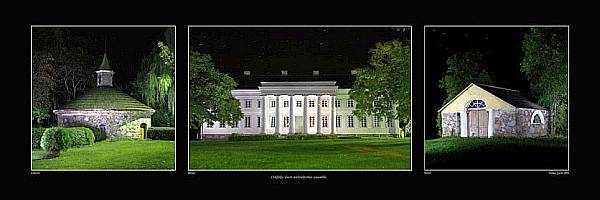Former Cirkliškis Manor Estate

68

1

0
5 out of 5
(1 reviews)
The Cirkliškis Manor ensemble, created in the early 19th century, comprises architectural monuments including luxurious palaces, an authentic icehouse, a historic forge, and a grand avenue leading visitors directly to the palaces. The manor's creator, Domicelė Sekežinskaitė-Mostovskienė, is known for her contributions to the development of this architectural complex, giving the ensemble its unique character.
The Cirkliškis Manor ensemble, created in the early 19th century, comprises architectural monuments including luxurious palaces, an authentic icehouse, a historic forge, and a grand avenue leading visitors directly to the palaces. The manor's creator, Domicelė Sekežinskaitė-Mostovskienė, is known for her contributions to the development of this architectural complex, giving the ensemble its unique character.
Notable figures of the 19th century, including historian Joachim Lelewel and artist Jonas Rustemas, visited Cirkliškis
Manor, which served as a center of cultural and political activity. The Mostovskis family even supported the 1863 uprising.
The manor's history continued through various changes, and by the end of the 19th century, it had passed into the hands of the Chaleckis family. During World War II and the subsequent Soviet era, the manor buildings were adapted for use by collective farms and later by an agricultural technical school, now known as an agricultural college, preserving the historical site for future generations.
Found a mistake?
Report

 Entertainment
Entertainment
 Sightseeing
Sightseeing
 Food establishments
Food establishments





























 55.118644, 26.137456
55.118644, 26.137456
 Get directions
Get directions









